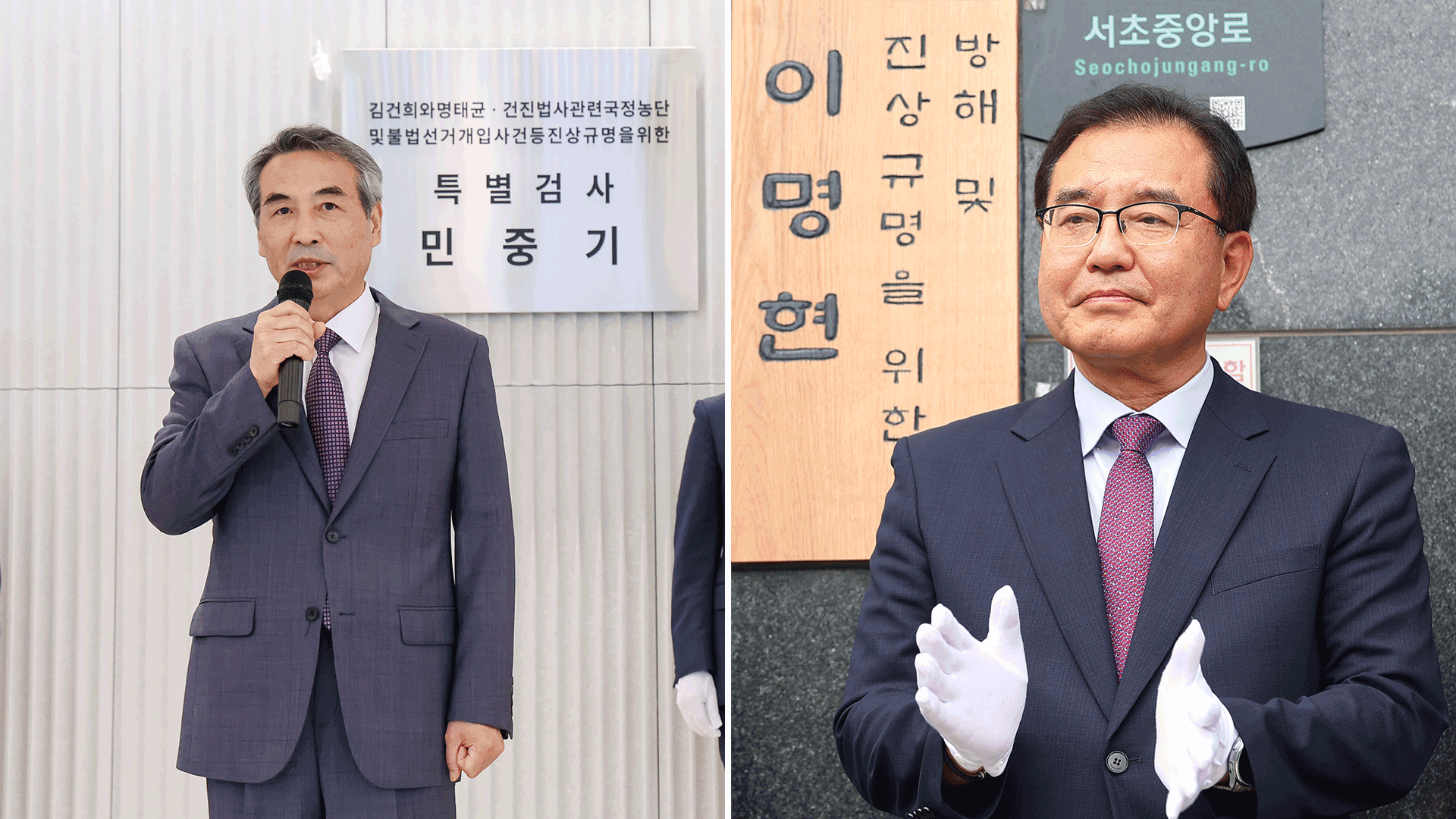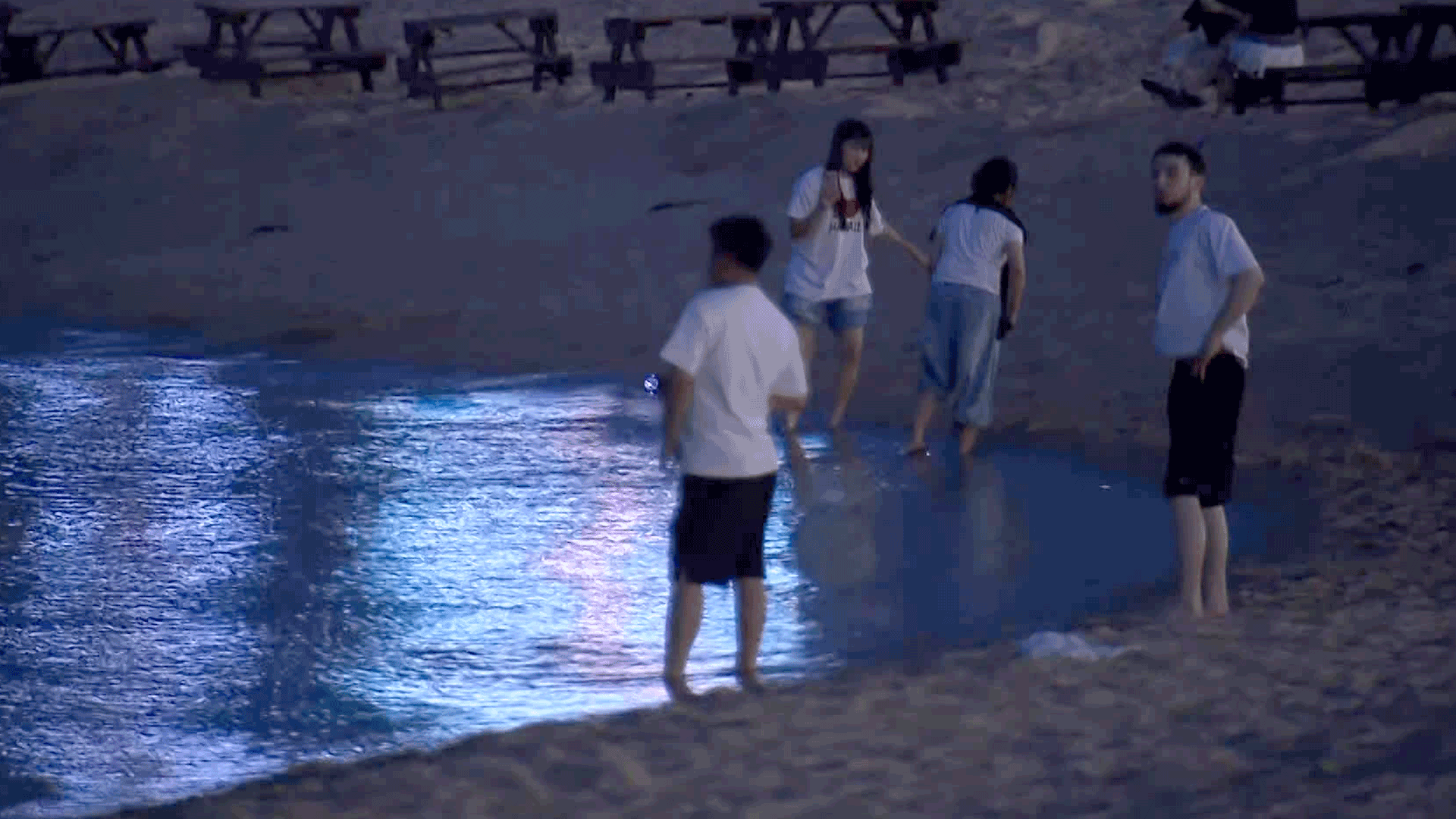Hologram technology increases safety of brain surgery by showing brain blood vessels in 3D
입력 2024.11.10 (01:39)
읽어주기 기능은 크롬기반의
브라우저에서만 사용하실 수 있습니다.
[Anchor]
Cerebral vascular surgery is a highly complex procedure because there is no clear view of the numerous overlapping blood vessels.
Recently, a domestic research team has developed an innovative technology that allows for the visualization of a patient's cerebral blood vessels in 3D during the procedure.
Park Kwang-sik, a medical specialist reporter, reports.
[Report]
A high-difficulty embolization procedure involves inserting a thin tube into the maze-like cerebral blood vessels.
Next to a patient with a cerebral aneurysm, the surgeon wears special glasses and moves their hands in the air.
Through the special glasses, they examine a 3D model of the cerebral blood vessels floating as a hologram from all angles.
[Seok Jin-hoo/Neurosurgeon at Korea University Guro Hospital: "It felt like looking at a future era.... Actually experiencing it was very intuitive and fascinating."]
This is a patient-customized '3D model of cerebral blood vessels' developed by a joint research team, including Korea University Guro Hospital, using mixed reality holography technology.
Until now, during brain surgery, doctors had to memorize the patient's cerebral vascular structure in advance and frequently check the monitor during the procedure.
Even with careful approaches, the complex cerebral blood vessels often appeared overlapped, increasing the risk of vessel rupture.
However, by utilizing the mixed reality 3D technology developed by the research team, it is possible to view the cerebral blood vessels in a more real three-dimensional manner.
[Yoon Won-ki/Professor of Neurosurgery at Korea University Guro Hospital: "The three-dimensional structure untangles the overlapping vessels in real-time right in front of my eyes, so there is no confusion with the vessels, and I can see them in real-time."]
As a result of applying mixed reality 3D technology to cerebral vascular procedures more than 120 times, complications such as vessel rupture did not occur.
The research team anticipates that as this technology becomes more advanced, it could also be used for virtual reality surgical training and brain surgery navigation in the future.
This is KBS News, Park Kwang-sik.
Cerebral vascular surgery is a highly complex procedure because there is no clear view of the numerous overlapping blood vessels.
Recently, a domestic research team has developed an innovative technology that allows for the visualization of a patient's cerebral blood vessels in 3D during the procedure.
Park Kwang-sik, a medical specialist reporter, reports.
[Report]
A high-difficulty embolization procedure involves inserting a thin tube into the maze-like cerebral blood vessels.
Next to a patient with a cerebral aneurysm, the surgeon wears special glasses and moves their hands in the air.
Through the special glasses, they examine a 3D model of the cerebral blood vessels floating as a hologram from all angles.
[Seok Jin-hoo/Neurosurgeon at Korea University Guro Hospital: "It felt like looking at a future era.... Actually experiencing it was very intuitive and fascinating."]
This is a patient-customized '3D model of cerebral blood vessels' developed by a joint research team, including Korea University Guro Hospital, using mixed reality holography technology.
Until now, during brain surgery, doctors had to memorize the patient's cerebral vascular structure in advance and frequently check the monitor during the procedure.
Even with careful approaches, the complex cerebral blood vessels often appeared overlapped, increasing the risk of vessel rupture.
However, by utilizing the mixed reality 3D technology developed by the research team, it is possible to view the cerebral blood vessels in a more real three-dimensional manner.
[Yoon Won-ki/Professor of Neurosurgery at Korea University Guro Hospital: "The three-dimensional structure untangles the overlapping vessels in real-time right in front of my eyes, so there is no confusion with the vessels, and I can see them in real-time."]
As a result of applying mixed reality 3D technology to cerebral vascular procedures more than 120 times, complications such as vessel rupture did not occur.
The research team anticipates that as this technology becomes more advanced, it could also be used for virtual reality surgical training and brain surgery navigation in the future.
This is KBS News, Park Kwang-sik.
■ 제보하기
▷ 카카오톡 : 'KBS제보' 검색, 채널 추가
▷ 전화 : 02-781-1234, 4444
▷ 이메일 : kbs1234@kbs.co.kr
▷ 유튜브, 네이버, 카카오에서도 KBS뉴스를 구독해주세요!
- Hologram technology increases safety of brain surgery by showing brain blood vessels in 3D
-
- 입력 2024-11-10 01:39:15

[Anchor]
Cerebral vascular surgery is a highly complex procedure because there is no clear view of the numerous overlapping blood vessels.
Recently, a domestic research team has developed an innovative technology that allows for the visualization of a patient's cerebral blood vessels in 3D during the procedure.
Park Kwang-sik, a medical specialist reporter, reports.
[Report]
A high-difficulty embolization procedure involves inserting a thin tube into the maze-like cerebral blood vessels.
Next to a patient with a cerebral aneurysm, the surgeon wears special glasses and moves their hands in the air.
Through the special glasses, they examine a 3D model of the cerebral blood vessels floating as a hologram from all angles.
[Seok Jin-hoo/Neurosurgeon at Korea University Guro Hospital: "It felt like looking at a future era.... Actually experiencing it was very intuitive and fascinating."]
This is a patient-customized '3D model of cerebral blood vessels' developed by a joint research team, including Korea University Guro Hospital, using mixed reality holography technology.
Until now, during brain surgery, doctors had to memorize the patient's cerebral vascular structure in advance and frequently check the monitor during the procedure.
Even with careful approaches, the complex cerebral blood vessels often appeared overlapped, increasing the risk of vessel rupture.
However, by utilizing the mixed reality 3D technology developed by the research team, it is possible to view the cerebral blood vessels in a more real three-dimensional manner.
[Yoon Won-ki/Professor of Neurosurgery at Korea University Guro Hospital: "The three-dimensional structure untangles the overlapping vessels in real-time right in front of my eyes, so there is no confusion with the vessels, and I can see them in real-time."]
As a result of applying mixed reality 3D technology to cerebral vascular procedures more than 120 times, complications such as vessel rupture did not occur.
The research team anticipates that as this technology becomes more advanced, it could also be used for virtual reality surgical training and brain surgery navigation in the future.
This is KBS News, Park Kwang-sik.
Cerebral vascular surgery is a highly complex procedure because there is no clear view of the numerous overlapping blood vessels.
Recently, a domestic research team has developed an innovative technology that allows for the visualization of a patient's cerebral blood vessels in 3D during the procedure.
Park Kwang-sik, a medical specialist reporter, reports.
[Report]
A high-difficulty embolization procedure involves inserting a thin tube into the maze-like cerebral blood vessels.
Next to a patient with a cerebral aneurysm, the surgeon wears special glasses and moves their hands in the air.
Through the special glasses, they examine a 3D model of the cerebral blood vessels floating as a hologram from all angles.
[Seok Jin-hoo/Neurosurgeon at Korea University Guro Hospital: "It felt like looking at a future era.... Actually experiencing it was very intuitive and fascinating."]
This is a patient-customized '3D model of cerebral blood vessels' developed by a joint research team, including Korea University Guro Hospital, using mixed reality holography technology.
Until now, during brain surgery, doctors had to memorize the patient's cerebral vascular structure in advance and frequently check the monitor during the procedure.
Even with careful approaches, the complex cerebral blood vessels often appeared overlapped, increasing the risk of vessel rupture.
However, by utilizing the mixed reality 3D technology developed by the research team, it is possible to view the cerebral blood vessels in a more real three-dimensional manner.
[Yoon Won-ki/Professor of Neurosurgery at Korea University Guro Hospital: "The three-dimensional structure untangles the overlapping vessels in real-time right in front of my eyes, so there is no confusion with the vessels, and I can see them in real-time."]
As a result of applying mixed reality 3D technology to cerebral vascular procedures more than 120 times, complications such as vessel rupture did not occur.
The research team anticipates that as this technology becomes more advanced, it could also be used for virtual reality surgical training and brain surgery navigation in the future.
This is KBS News, Park Kwang-sik.
-
-

박광식 기자 doctor@kbs.co.kr
박광식 기자의 기사 모음
-
이 기사가 좋으셨다면
-
좋아요
0
-
응원해요
0
-
후속 원해요
0















이 기사에 대한 의견을 남겨주세요.